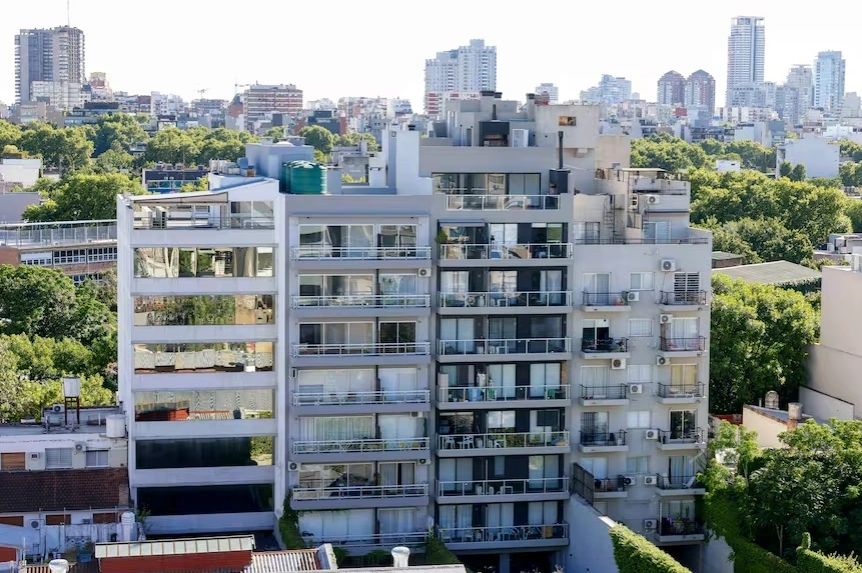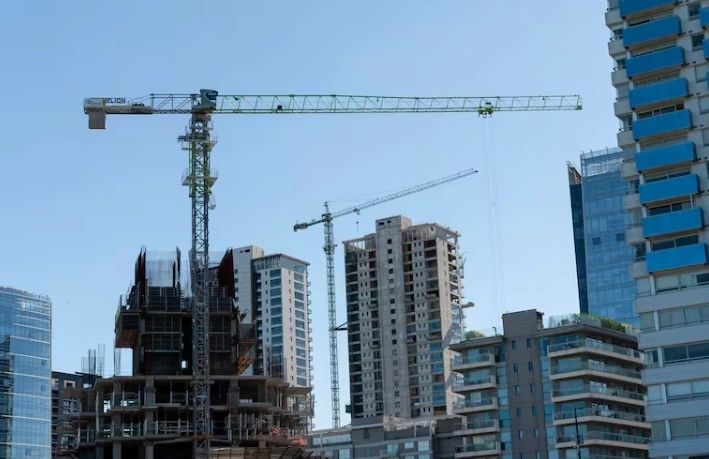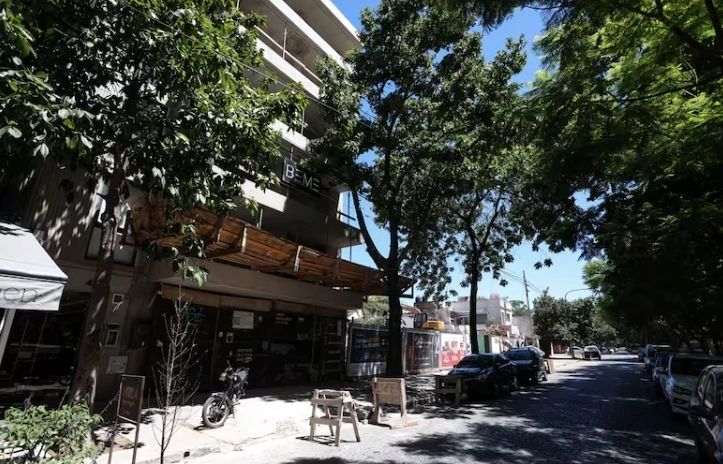BuySellBA
Administrator
Data confirming that it's the "perfect" time to buy an apartment - La Nacion Propiedades
Source:
Los datos que confirman que es el momento “perfecto” para comprar un departamento
Pese a la tormenta que enfrenta un sector clave de la economía como la construcción, hay variables que anticipan que los valores de los inmuebles seguirán creciendo
July 28, 2025
Despite the storm facing a key sector of the economy such as construction, there are variables that anticipate that property values will continue to grow.
By Carla Quiroga

Businesspeople in the sector acknowledge that they are uncomfortable but that it is a time of transition.Santiago Filipuzzi
Property sales have been growing for 41 consecutive months. In June, 36% more deeds were signed in the city of Buenos Aires than in the same month last year. That's nearly 30,000 deeds in the first six months of the year, which is almost 50% more than the same period in 2024. With these numbers, the real estate market picture is encouraging but not without tensions in a scenario that is not equal for all parties. "Those who compete with imports lose; those who depend on market movements grow; and those who depend on appreciation depend on the market ," analyzed economist Federico González Rouco, of the consulting firm Empiria, during his presentation at the Real Estate Summit organized by LA NACION . "For construction, it's worse; for purchasing, it's better," he summarized.
Today there is a rift among developers The real estate brokers , who are currently the kings of the market, are struggling to sell apartments under construction . “We are uncomfortable; the real estate development business is going through a period of transition.” The phrase echoed throughout the talks at the sector event attended by more than 400 business leaders. In numbers, the cost of construction measured in dollars rose 1.2% in June, but if analyzed since the October 2023 presidential elections, it has accumulated a 126% increase, according to data from Zonaprop. “Building today costs 3.4 times what it cost in October 2020 (the series low) and is 46.6% above the 2012-2024 average ,” explained Leandro Molina, classifieds director for Quintoandar, the group that owns Zonaprop. This increase was driven mainly by the rise in salaries in dollars—a variable that represents more than 50% of the cost of construction..
No one doubts that the Argentine economy is undergoing a price readjustment. "What we're analyzing is the current situation: the dollar was devalued worldwide, and in Argentina everything except for real estate under construction has increased ," clarified Gonzalo de la Serna, CEO of Consultatio, Eduardo Costantini's company, which was more active than ever this year: it bought land again in the city of Buenos Aires—it hadn't done so since 2017—and even a company.

Construction costs have increased by 126% since October 2023, according to Zonaprop. PATRICIO PIDAL/AFV
“We are doing badly but we are doing well”
The sentiment is similar to that experienced in other industries . Argentina is doing its homework to ensure that, this time, the macroeconomic restructuring is sustained over the long term. "We're doing badly, but we're doing well" is the widespread sentiment across most industries, and this one is no exception. What happened in recent years is that the dollar was ahead of inflation, and developers enjoyed generous margins. "Prices in dollars have been stable or declining since April 2018. In other words, they are behind in a context of global dollar inflation of 5% annually," said Gerardo Azcuy, president of the developer that bears his name, which has 30 projects between those completed and those underway.“The penultimate administration [of Mauricio Macri] was criticized for its gradualism, and now that the shock has arrived, we don't like it either. But we know this is a time we have to get through,” insisted Carlos Spina, a partner at Argencons, the developer behind Quartier, which just over two months ago “partnered” with Eduardo Costantini, the creator of Nordelta and Puertos.
"When you look at the curve, you always have to deflate it [adjust it for inflation], because the dollar from 10 years ago is not the same as it is today, and that means we're at a peak similar to that of 2017," the executive clarified. "Furthermore, so far this year, the cost is flat ," de la Serna added: in the first six months of the year, it increased 3%, according to data from the Argentine Chamber of Construction (CAC) , which compiles the index that adjusts the installments for projects financed during construction.
With construction costs exceeding US$1,500—it was below US$1,000 at the height of the pandemic— the sector is undergoing a transition from an unstable equilibrium where large, cheap construction was carried out in response to a demand seeking to hedge against inflation and escape currency—property is sold in dollars. Today, however, it is moving toward a profitable equilibrium with compressed margins. In other words, a more stable macroeconomic environment without the possibility of immediately passing costs on to prices.
According to de la Serna, construction costs are 50 percent above the average of the last 10 years , while the Merval index is at 77 percent , and prices have not risen more than 20 percent. "This means that those who buy today will find better prices than in the future ," the businessmen agreed. "A price adjustment that must be arbitrated with the rest of the economy. Now, if the exchange rate changes later, that changes for everyone," de la Serna clarified.
Azcuy, who started in Caballito and has now landed in Nordelta, insisted that business analysis isn't so linear. He explained that, from the time the land is purchased, the permits are approved, and a project is completed, it can take five years or more during which "many things happen." "You can't analyze the business by project; you have to look at your company, your financial reinsurance, your assets, your working capital, your advances. When you look at the final picture, you may have earned less, sold for less, but you've funded yourself, bought land, while at other times you've had a chance because the dollar has settled."

While the cost of construction is 50 percent above the average of the last 10 years, the Merval is at 77 percent and property prices have not risen more than 20 percent. Gonzalo Colini
Marcos Juejati, director and founding partner of NorthBaires, who, among other ventures, built a project that housed the América cinema in Santa Fe and Callao, believes that once the used inventory runs out , the time for development begins. When? "Historically , a year or a year and a half after prices skyrocket, the market begins to validate the new values ," he responded.
In other words, demand will have to realize that costs in Argentina are more aligned with the logic of the world's organized economies, where the focus on efficiency and productivity, not speculation, is what generates business margins . Vertical integration was a model defended by Azcuy. "The coordination of the orchestra within the same company allows you to achieve cost efficiency because you align opposing interests," he explained.
Can China lower the cost?
Regarding the impact of the Asian giant on the cost structure, business leaders were cautious. Daniel Mintzer, president of the developer G&D, which chooses to sell outside the ABC1 segment, with projects in Constitución and ticket prices starting at US$50,000, warned that today 50% of a building's cost is labor, and of the other 50%, China can represent between 5% and 10%. Jeremías González Toledo, director of Inarch, the company that, among other projects, is moving forward with Via Viva, the US$60 million project underway in Bajo Viaducto Mitre, in the northern corridor of Buenos Aires, agreed: "The real impact on costs is relatively low, and the risk one assumes by importing—especially finishes—is significant."Regarding the conditions that must be met to reverse Argentina's historic deficit of three million homes , Issel Kiperszmid, president of the developer Dypsa, said it's a process with many variables to align. "Macroeconomics is a necessary condition, but not sufficient. Furthermore, for a sector that has the capacity to repay, the other condition is credit at relatively reasonable rates, and for that, there must be a capital market where banks can obtain financing, and that doesn't exist today ," he was clear. The most compelling evidence is that on the same day as the LA NACION Summit, the government regulated the implementation of divisible mortgages, which allow a buyer to purchase an apartment under construction with financing , something that practically didn't yet exist in the Argentine real estate sector. The bad news is that for that to happen, banks would have to launch the lines, a difficult step to take, especially considering that in recent months, banks began to turn off the funding available to mortgage borrowers to purchase used units.

The mortgage loans that drove the purchase of used properties last year are tending to cool down.Freepik - Image by Freepik
Mortgage loans cool down
Since mid-2024, this type of credit has been a major driver of demand for used apartments, but mortgage deeds signed in June in the city of Buenos Aires show the first signs of slowing: while there was a 957.4% increase compared to the same month last year, they fell 6.46% compared to May. "Last year, there was a substantial improvement, but we didn't reach the peak of 2017/2018," remarked González Rouco, who noted two obstacles: rising interest rates and a lack of liquidity in the financial system. The average interest rate at banks has risen four points since last year. In other words, financing is becoming more expensive, and fewer people are accessing it.Furthermore, to continue growing, credit must overcome the pressure generated by the financial system's liquidity to lend long-term . Banks cannot continue taking deposits for 30 or 60 days and lending for 30 years.,We must achieve the securitization of the mortgage market as in first world countries.
The historical comparison reflects the long road Argentina has to travel. González Rouco explained that the 2020-2023 period was the worst in Argentina's history in terms of new loans and market volume. Today, mortgage lending represents just 0.2% of GDP . "Paraguay has the equivalent of 130,000 more loans than us, and Chile has 1,800,000. So, with the exception of Venezuela, we are the worst off in Latin America and one of the worst off in the world ," the economist added.
Looking ahead, in addition to the macro challenges, they face changes in the way construction is done , which is key at a time when managing the business efficiently makes a difference. Lucas Salvatore, president of Idero, a company dedicated to modular construction that manufactures projects in a plant, explained that with his model—raw materials come in and 200 meters later the finished house comes out—costs are around US$1,000/m². Kiperszmid is also moving toward industrialized models, but with concrete. “Production costs are down approximately 15%, and our goal is to reduce them by 25%, but fundamentally, it significantly reduces lead times,” he stated.
Salvatore acknowledged that efficiency is the trump card in the new scenario. “As the economy normalizes, the country normalizes. If they give you energy, no one insulates their walls, because it's cheaper not to. If the only way to finance a real estate project was to do it in five years, no one is going to build quickly. One is a consequence of the other.”
In this scenario, González Rouco emphasized that we must stop thinking in terms of cycles and learn to live with a scenario of currency appreciation if it consolidates. And that as long as no one proves otherwise, mortgage lending will continue to be a momentary phenomenon . In closing, he offered a statement that summed up the current reality of the sector: "It's not sustainable for intermediaries to celebrate while developers suffer. The other side of the river is spectacular, but the river itself is quite complicated."
www.buysellba.com

